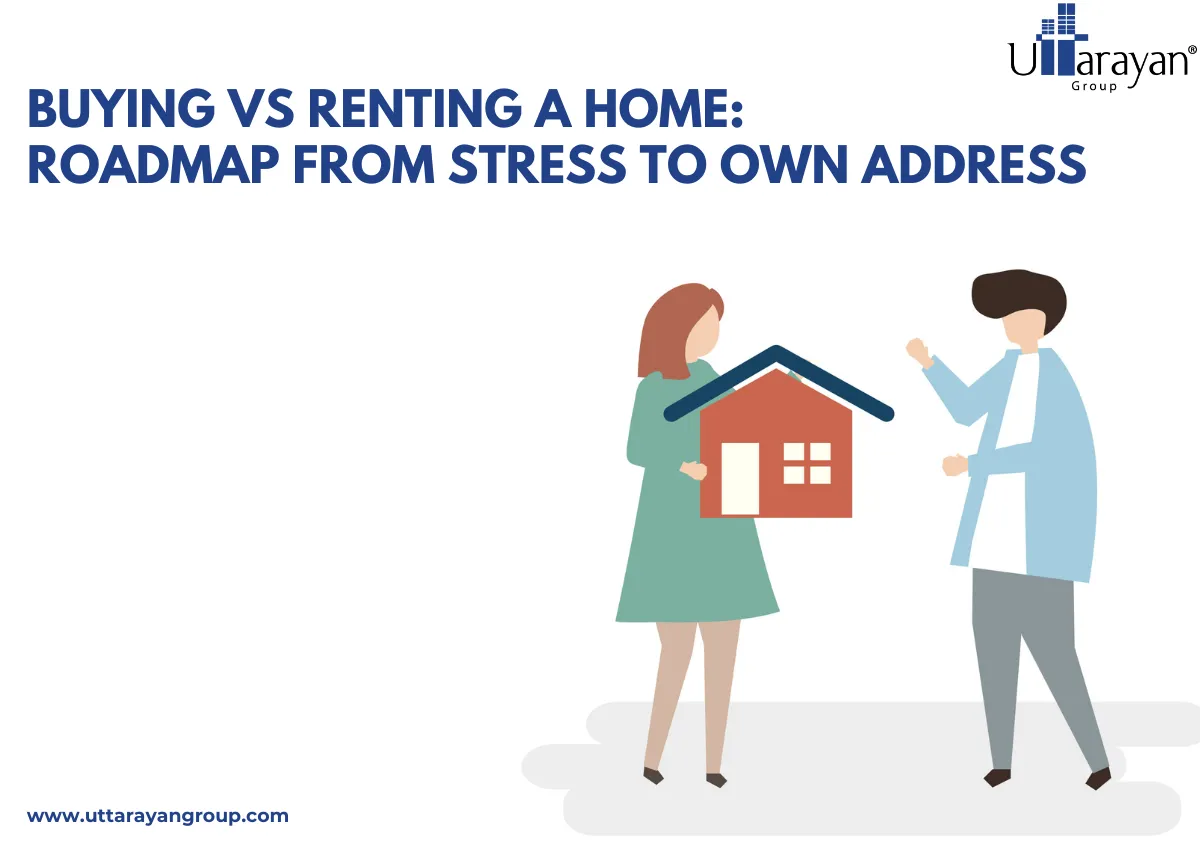Get Support
+91 98540 40005
Dry Waste Wet Waste: The Harm Of Mixing At Home & Beyond

Hey there!
Ever tossed a banana peel and a plastic wrapper into the same bin and thought, "It all goes to the same place anyway, right?"
Well, not quite! The way we handle dry waste wet waste can either help the environment or cause serious harm. Mixing dry waste and wet waste might seem harmless, but it actually disrupts the waste management system, increases pollution, and even affects your health.
So, let's break it down-what happens when you mix dry waste wet waste, how you can easily separate them, and why luxury homes, like the ones from Uttarayan Group, are embracing waste segregation as a key feature for modern, eco-friendly living.
What is Dry Waste and Wet Waste?
Before we get into the details, let's get clear on what counts as dry waste and wet waste:
Dry Waste:
This includes non-biodegradable and recyclable materials like:
Paper, cardboard, and magazines
Plastic bottles and packaging
Glass, metals, and aluminum foil
Old clothes, electronics, and wood scraps
Wet Waste:
This is organic, biodegradable waste that decomposes naturally, such as:
Fruit and vegetable peels
Leftover food, eggshells, and coffee grounds
Garden waste like leaves and flowers
Why Mixing Dry Waste and Wet Waste is a Problem
Imagine putting a wet tea bag on a newspaper. What happens? The paper gets soggy and useless. That's exactly what happens when dry waste and wet waste get mixed in your trash. Here's why that's bad news:
1. It Makes Recycling Almost Impossible
If dry waste like paper and plastic get contaminated with wet waste, it can't be recycled. That means more waste in landfills and less reuse of valuable materials.
2. It Produces Harmful Gases
When wet waste like food scraps and garden waste get mixed with plastics and metals, they decompose improperly in landfills, producing methane-a greenhouse gas much worse than carbon dioxide.
3. It Attracts Pests and Spreads Disease
A bin filled with mixed dry waste wet waste becomes a breeding ground for insects, rodents, and harmful bacteria, making your home unhygienic.
4. It Increases Waste Collection Costs
Waste management companies struggle to separate dry waste and wet waste when they're mixed, increasing costs for segregation, transport, and disposal.
How to Choose the Best Dustbins for Waste Segregation
Using the right dustbins makes dry waste wet waste separation effortless. Here's what you need:
Green Bins: For wet waste like food scraps, leaves, and biodegradable materials.
Blue Bins: For dry waste like plastics, metals, paper, and recyclables.
Red Bins: For hazardous waste like batteries, chemicals, and broken glass.
Tips for Setting Up Waste Bins at Home:
Place bins in key areas like the kitchen, living room, and balcony.
Use clear labels to ensure correct disposal.
Opt for bins with lids to prevent pests and odors.
Where Does Your Waste Go After Disposal?
Ever wondered what happens to your trash once it leaves your home? If you've been thinking, "It all gets mixed anyway," think again! Here's how dry waste and wet waste are processed:
1. Collection & Transportation:
Waste is collected by municipal trucks or private companies and taken to processing centers.
2. Segregation & Processing:
- Dry waste is sorted for recycling-plastics are melted, glass is reshaped, and paper is reused.
- Wet waste is sent to composting facilities or biogas plants, where it's converted into fertilizer or clean energy.
3. Landfills (For Non-Recyclables):
Only non-recyclable, hazardous waste ends up in landfills. By properly sorting dry waste wet waste, you can reduce what goes to landfills and help the planet.
Busting Common Waste Segregation Myths
Myth 1: "All waste gets mixed eventually, so why bother?"
Reality: Properly segregated waste is easier to recycle and process. Waste mixing happens only when people don't separate it at the source.
Myth 2: "Biodegradable waste doesn't need to be separated."
Reality: Even biodegradable wet waste should be separated to avoid contaminating dry waste and to make composting more effective.
Myth 3: "It's too much effort to separate waste."
Reality: All it takes is using the right bins and developing simple habits-waste segregation is easier than you think!
How Proper Waste Segregation Benefits Your Home
Separating dry waste and wet waste isn't just good for the planet; it improves your home environment too!
Keeps Your Home Clean & Hygienic - No more overflowing, smelly trash cans!
Saves Money - Recycling dry waste can reduce your waste management costs.
Helps the Environment - Less landfill waste means less pollution.
Easy Habits for Better Waste Disposal
Keep a separate bin for dry waste and wet waste in your kitchen.
Rinse plastic containers before tossing them in the dry waste bin.
Educate your family about the importance of waste segregation.
Compost wet waste to create natural fertilizer for plants.
Luxury Living with Eco-Friendly Waste Management
If you're looking for a home that makes sustainable living easier, check out Uttarayan Group's luxury flats. Their modern homes come with smart waste disposal systems, ensuring proper segregation of dry waste wet waste. Because sustainable living isn't just about luxury-it's about responsibility too!
FAQ Section
Why is it important to separate dry waste and wet waste?
Segregation makes recycling easier, reduces landfill waste, and keeps your home cleaner.
What are the best dustbins for dry waste wet waste separation?
Use green bins for wet waste and blue bins for dry waste. For hazardous waste, use a red bin.
Can biodegradable waste be mixed with dry waste?
No. Wet waste like food scraps should be composted or processed separately to prevent contamination.
What happens if I don't segregate waste?
Mixed waste leads to landfill overflow, pollution, and increased waste management costs.
How can I start segregating waste at home?
Get separate bins, educate your household, and make it a habit!
By following these easy steps, you're not just improving your home-you're helping the environment. Start segregating dry waste wet waste today and be a part of the change!
Proper waste segregation isn't just a responsibility-it's a simple habit that can create a cleaner home and a greener planet. So, let's start today by separating dry waste wet waste and making sustainable living a part of our daily routine!
Looking for a dream home?
We can help you realise your dream of a new home.




0 Comments